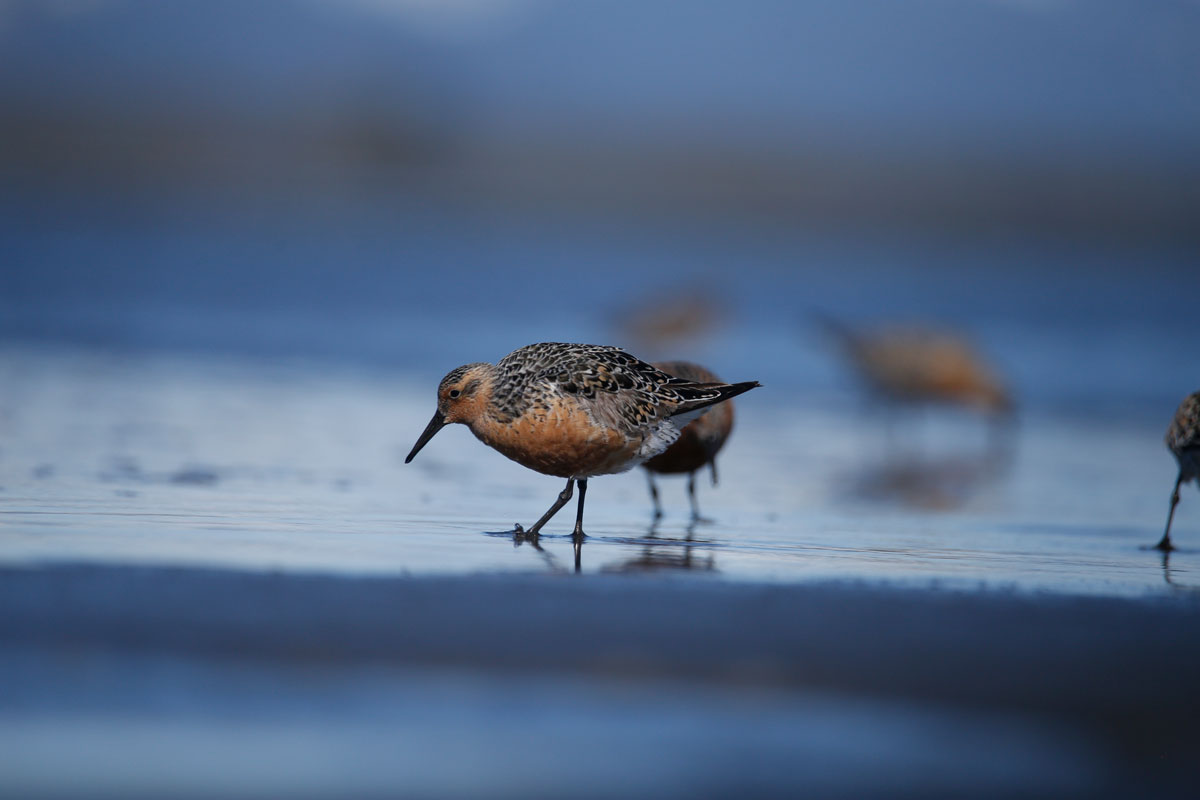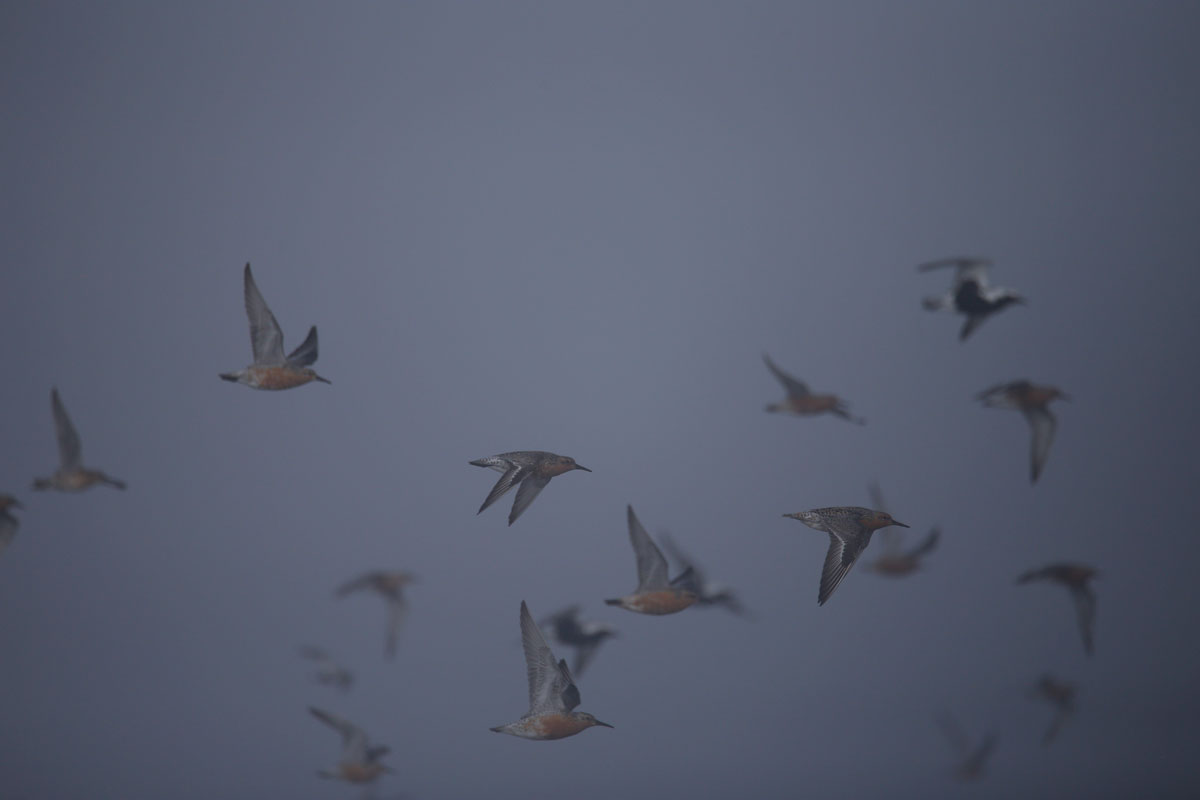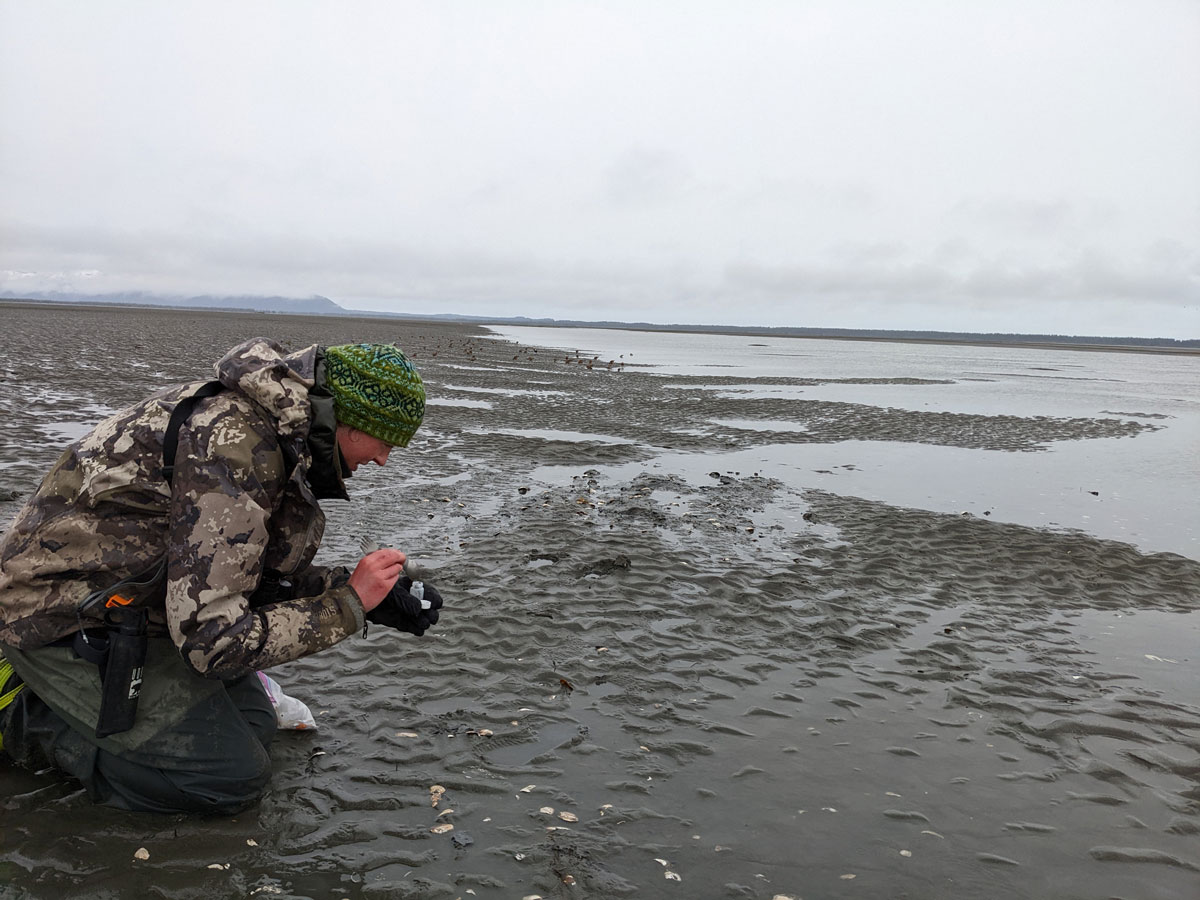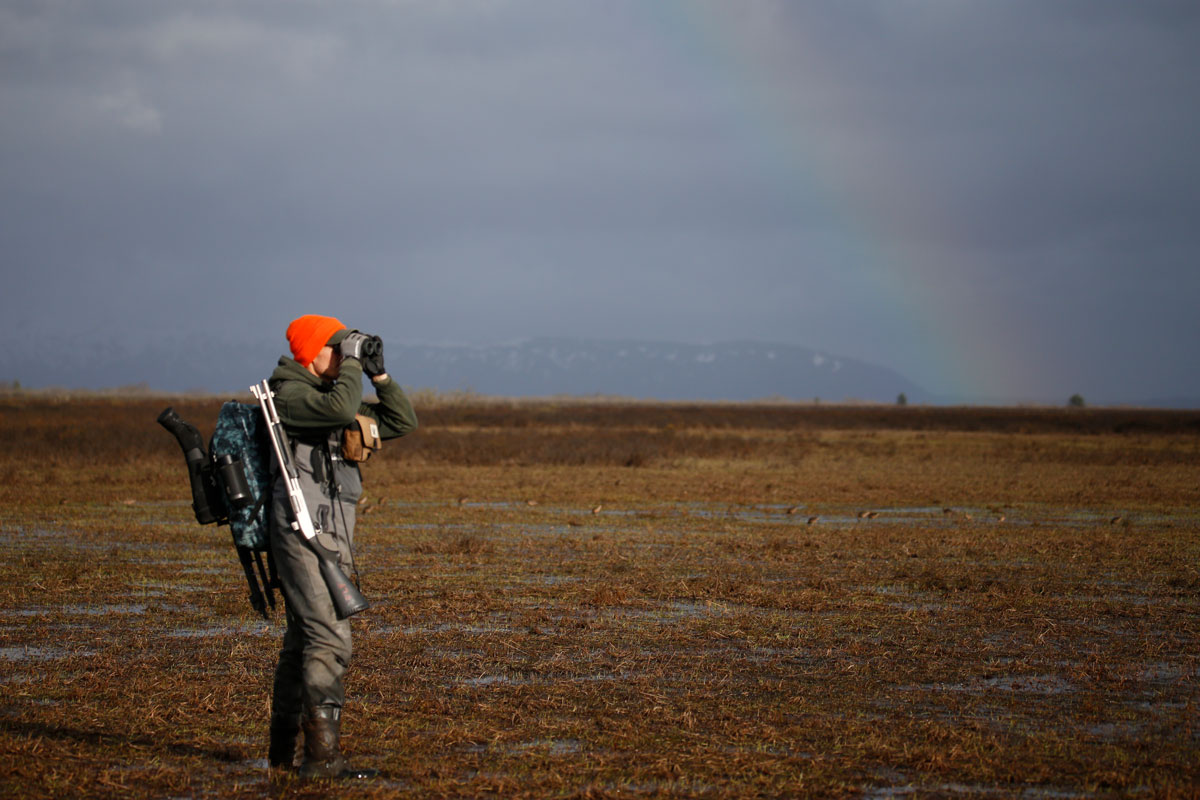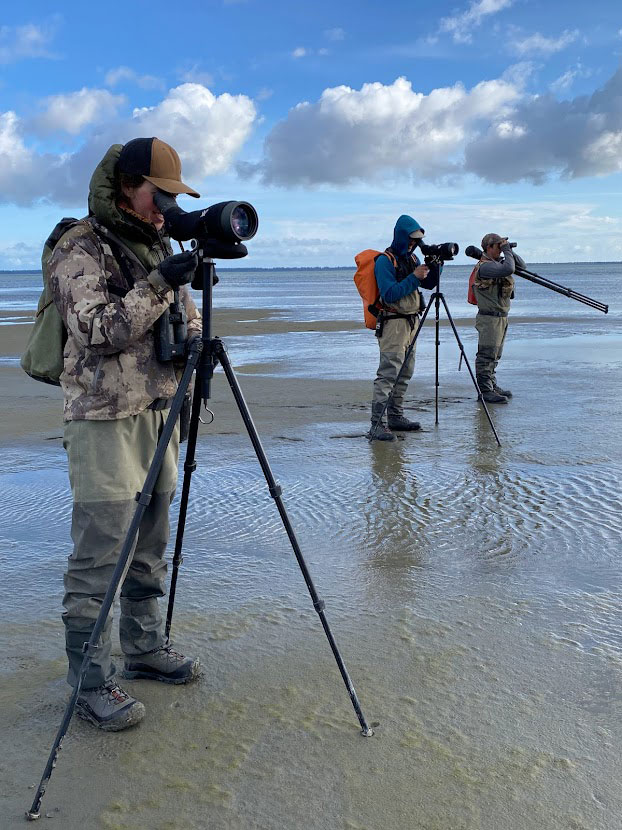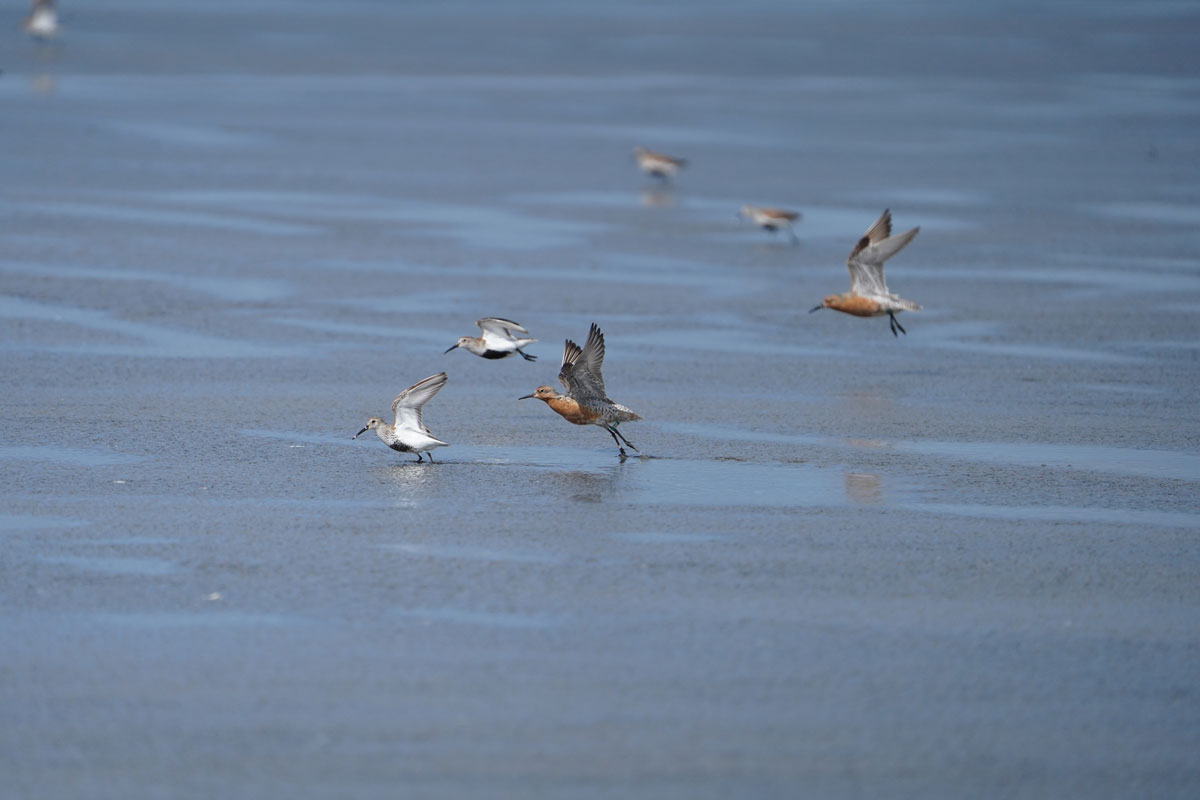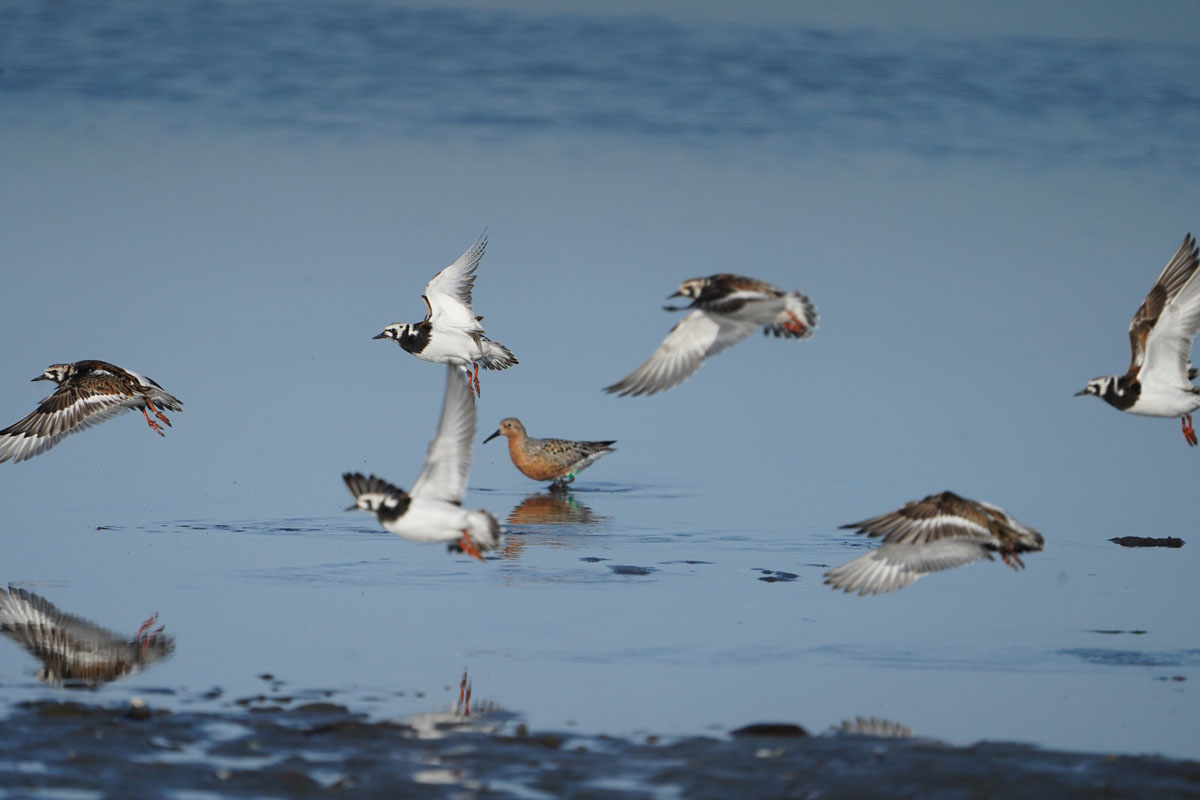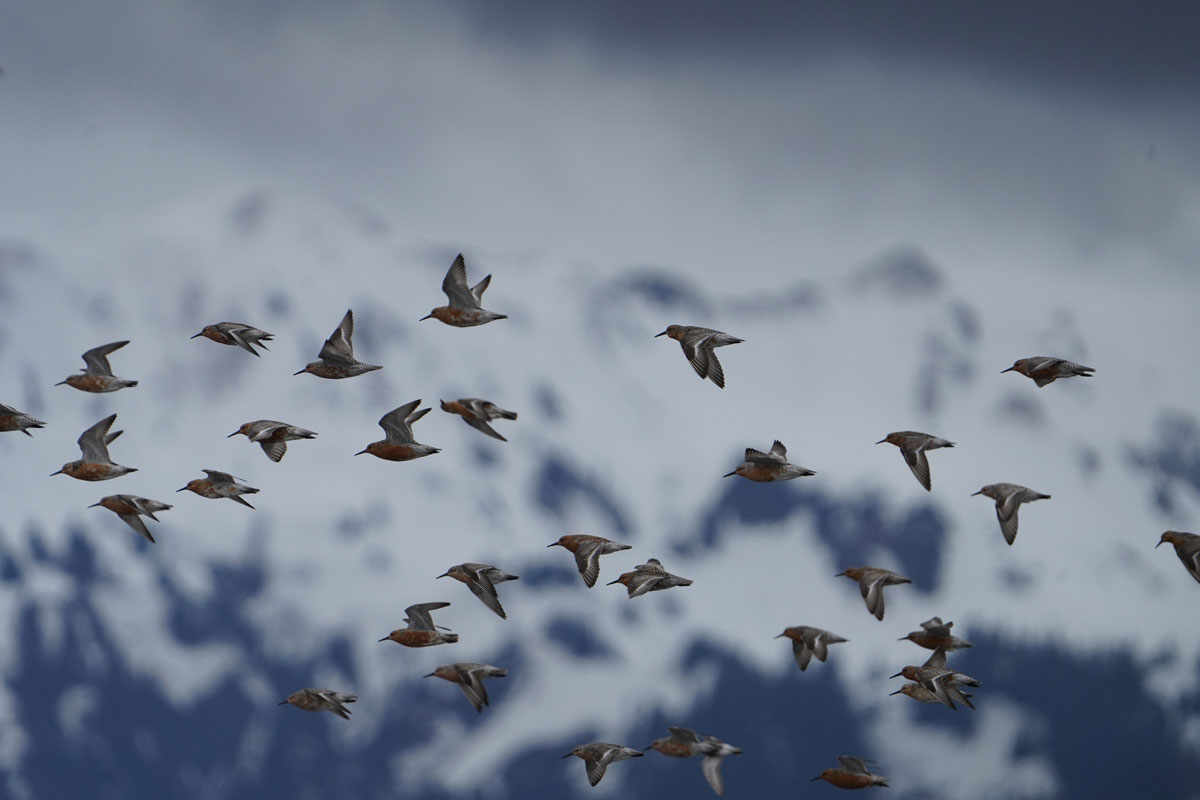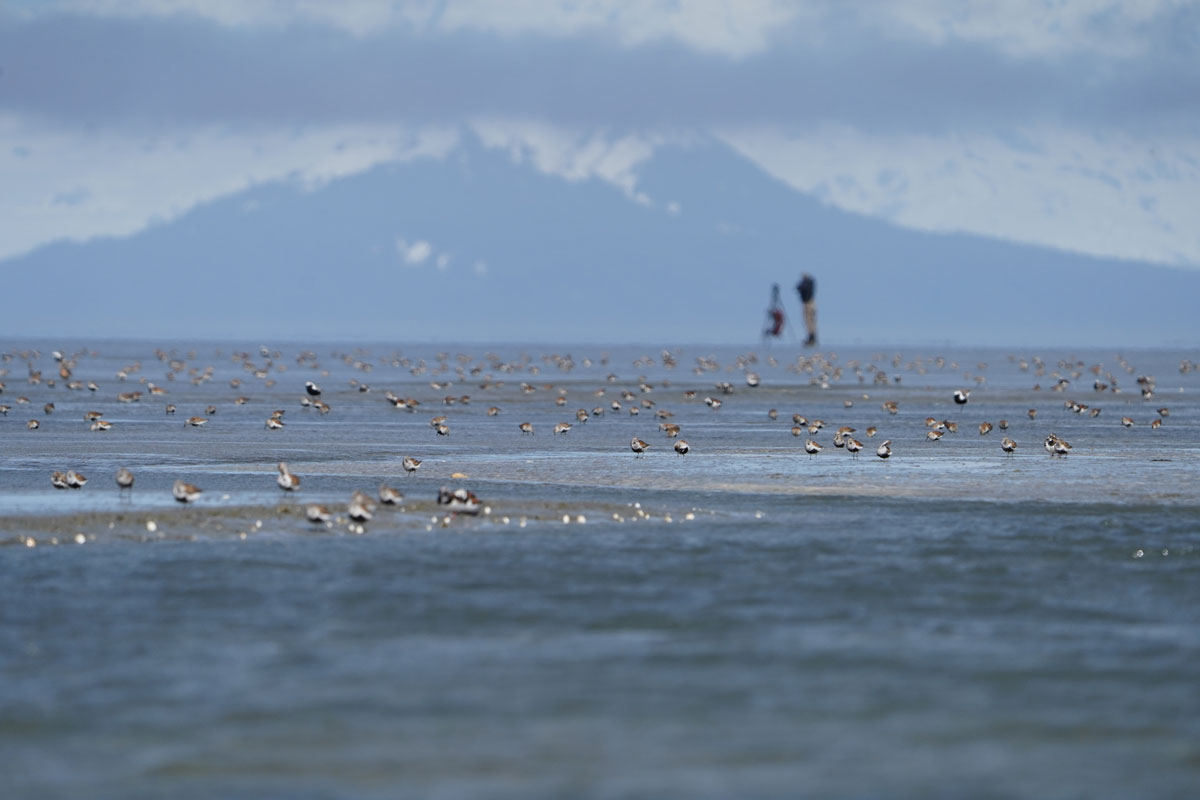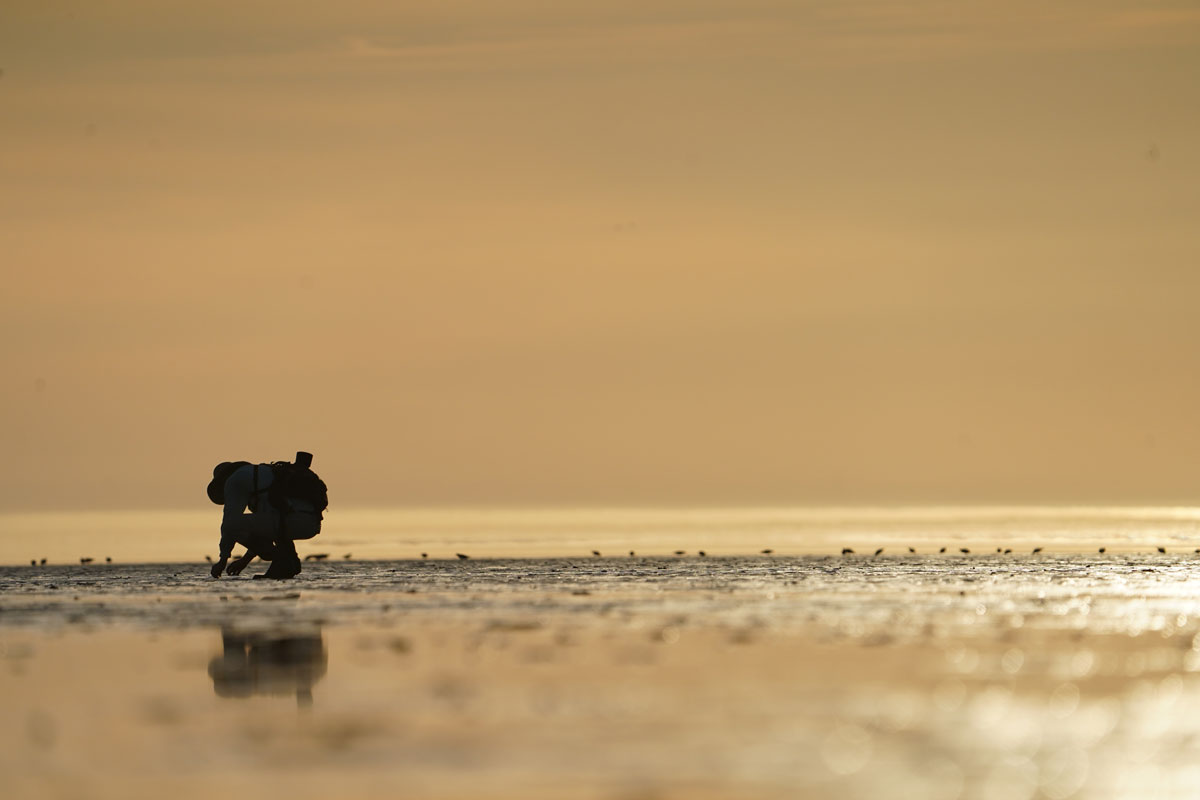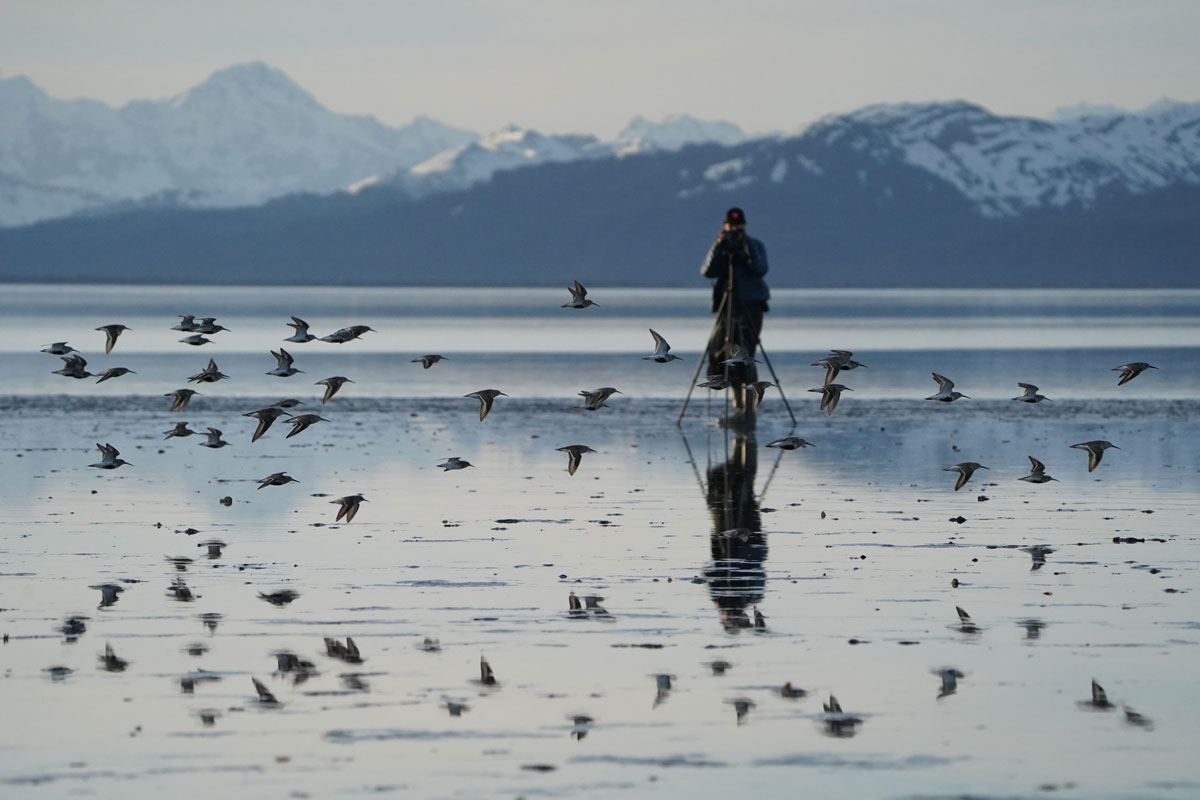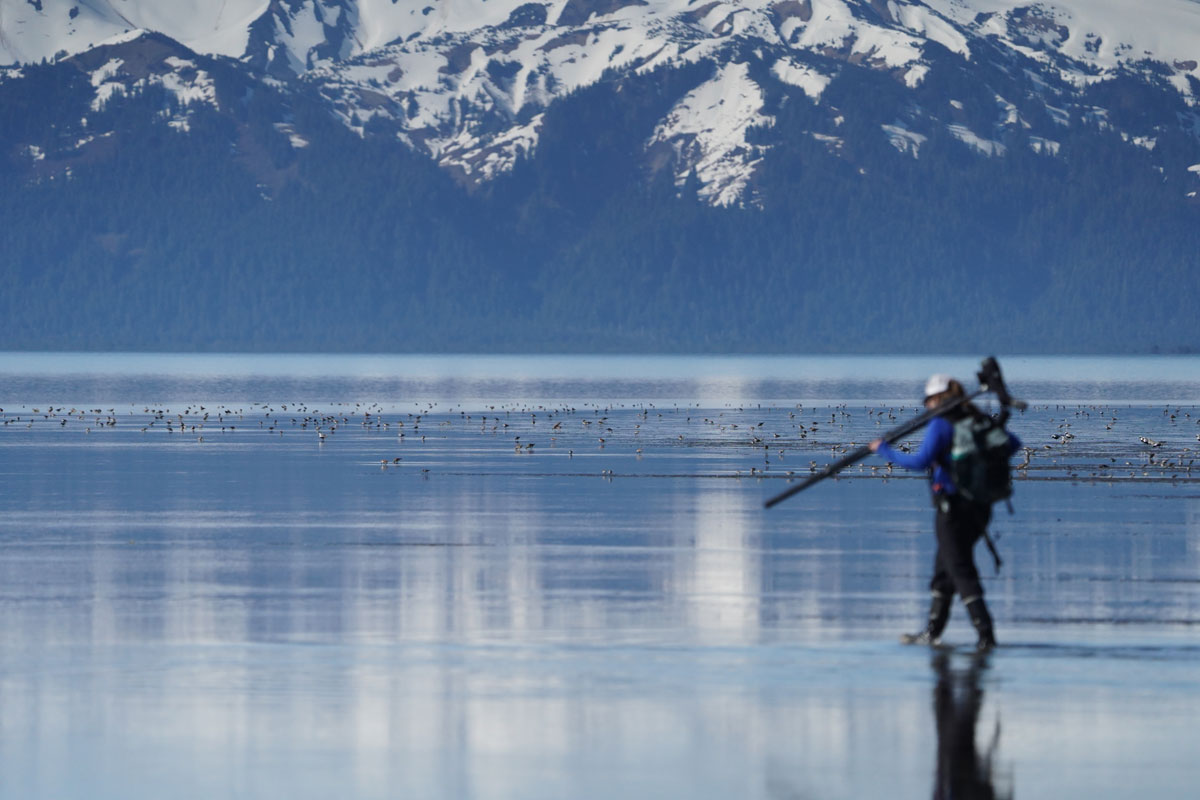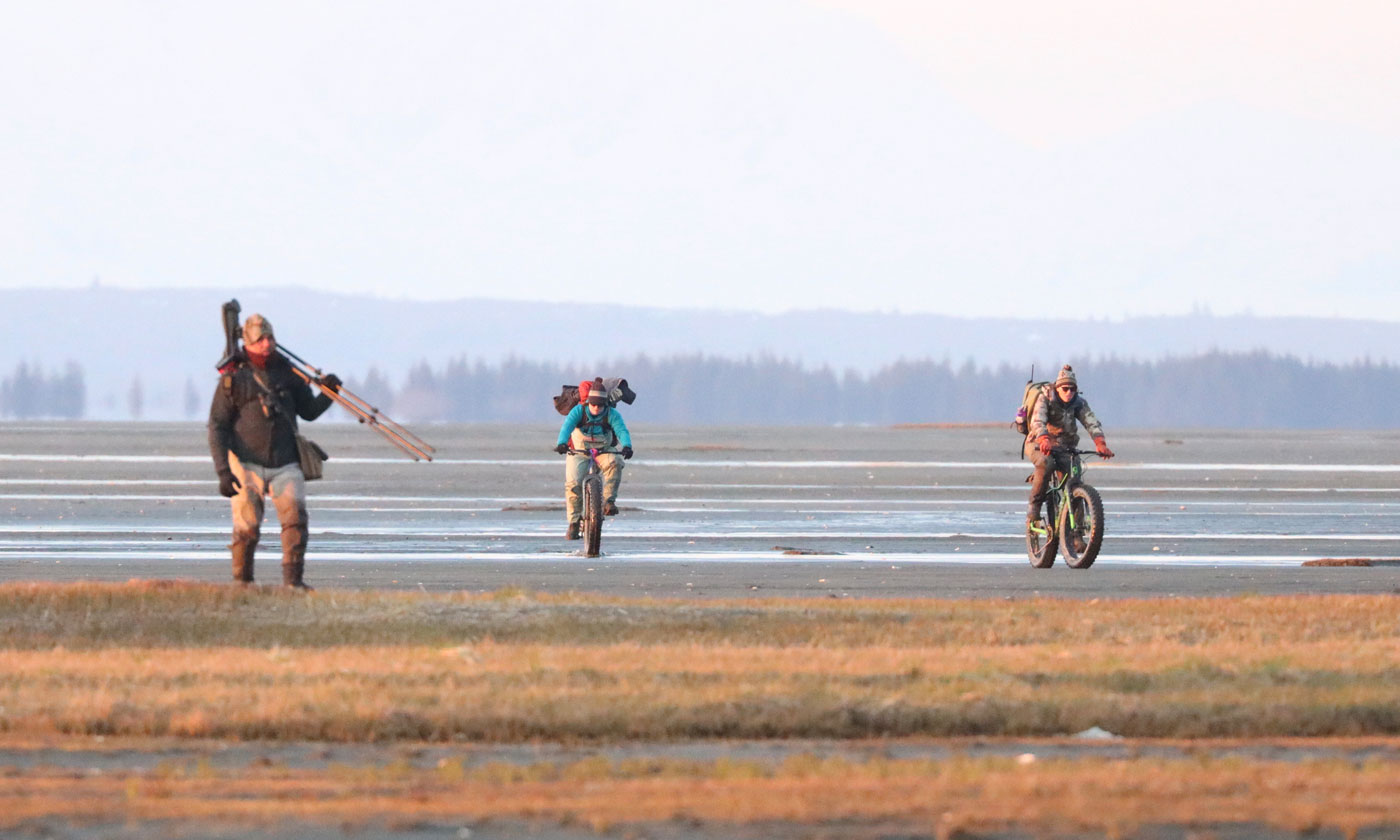Red Knot
Pacific Red Knots (Calidris canutus roselaari) are a migratory shorebird species that breed in western and northwestern Alaska and overwinter in Mexico. Six subspecies of Red Knots are recognized across the globe, and several are in decline. The Pacific population of Red Knots has the smallest population size (currently ~22,000 birds) of all Red Knot populations and has been declining over the past four decades for unknown reasons. A study by the TED Program and US Forest Service is aimed at better understanding important areas of use for Red Knots during their migration. A site-specific study is occurring in Controller Bay, Alaska, which is a recently recognized stopover location during the spring migration. The goals of the study are to estimate the percent of the population that relies on Controller Bay as an important migratory stopover and to determine the diet of Red Knots in this bay. To-date, no studies have been conducted to determine Red Knot diet in the state of Alaska. Understanding this baseline information about Red Knot life history will allow ADF&G to make more informed decisions regarding the conservation of the species, help mitigate threats, and identify critical habitat that this shorebird relies on during their migration.
Video
Red Knot Population Abundance in Controller Bay
Wildlife Biologist Jenell Larsen Tempel discusses the objectives and hurdles of her first field season estimating the abundance of Red Knots, a shorebird species, during the spring migration along the outer coast.
Gallery

